Nininger student travel award previous recipients
2025
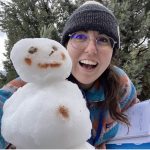 Victoria Concepcion is a 2nd year Ph.D. student in the School of Earth and Space Exploration, working with Dr. Craig Hardgrove on Martian surface geology. Her research utilizes data from the Dynamic Albedo of Neutrons (DAN) instrument on the Curiosity rover to investigate subsurface hydration in Gale Crater. At LPSC, she will present her findings on hydration and elemental trends within the Clay-Sulfate Transition Zone, where the rover has identified hydrated sulfates such as gypsum, starkeyite, and others. Her results provide critical insights into the correlation between subsurface hydration measurements from DAN and mineralogical and elemental observations from other rover instruments. This work contributes to reconstructing the geological history of Gale Crater and improving our understanding of past aqueous processes on Mars. Her research is conducted in collaboration with Sean Czarnecki, Rachel Sheppard, and the Mars Science Laboratory Curiosity Rover Team.
Victoria Concepcion is a 2nd year Ph.D. student in the School of Earth and Space Exploration, working with Dr. Craig Hardgrove on Martian surface geology. Her research utilizes data from the Dynamic Albedo of Neutrons (DAN) instrument on the Curiosity rover to investigate subsurface hydration in Gale Crater. At LPSC, she will present her findings on hydration and elemental trends within the Clay-Sulfate Transition Zone, where the rover has identified hydrated sulfates such as gypsum, starkeyite, and others. Her results provide critical insights into the correlation between subsurface hydration measurements from DAN and mineralogical and elemental observations from other rover instruments. This work contributes to reconstructing the geological history of Gale Crater and improving our understanding of past aqueous processes on Mars. Her research is conducted in collaboration with Sean Czarnecki, Rachel Sheppard, and the Mars Science Laboratory Curiosity Rover Team.
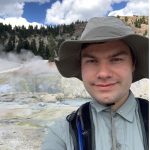 Christian Kroemer is a 3rd Year Ph.D. student in the School of Earth & Space Exploration at Arizona State University working with Dr. Sujoy Mukhopadhyay. His research focuses on noble gases in Martian meteorites to study Mars’ accretion, early history, and evolution. At LPSC, he will present krypton isotopic measurements across multiple groups of Martian meteorites, represented by Zagami, Los Angeles, Lafayette, and ALH 77005. This research presents further evidence for the potential for a chondritic source as the origin of volatiles across much of Mars’ interior and the consequences for planetary accretion on Mars and other terrestrial planets. This work was done in collaboration with Dr. Sandrine Peron at CNRS Université d’Orléans.
Christian Kroemer is a 3rd Year Ph.D. student in the School of Earth & Space Exploration at Arizona State University working with Dr. Sujoy Mukhopadhyay. His research focuses on noble gases in Martian meteorites to study Mars’ accretion, early history, and evolution. At LPSC, he will present krypton isotopic measurements across multiple groups of Martian meteorites, represented by Zagami, Los Angeles, Lafayette, and ALH 77005. This research presents further evidence for the potential for a chondritic source as the origin of volatiles across much of Mars’ interior and the consequences for planetary accretion on Mars and other terrestrial planets. This work was done in collaboration with Dr. Sandrine Peron at CNRS Université d’Orléans.
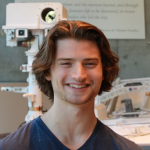 Alexander Layman is a senior Astrophysics and Physics major working with SESE Prof. Jim Bells’ group on Mastcam data analysis. His research focuses on developing methods for detecting iron-nickel meteorites on the surface of Mars by employing the Mastcam multi-spectral imager onboard the NASA Mars Science Laboratory Curiosity rover. He is using three techniques -decorrelation stretch, collecting spectral ratios, and extracting relative reflectancesto find spectral consistencies to identify the meteorites. Once located, these Iron-nickel meteorites can reveal atmospheric and surface processes that influence environmental conditions on Mars. Alex’s current work extends previous searches by exploring Sols 3000-3953.
Alexander Layman is a senior Astrophysics and Physics major working with SESE Prof. Jim Bells’ group on Mastcam data analysis. His research focuses on developing methods for detecting iron-nickel meteorites on the surface of Mars by employing the Mastcam multi-spectral imager onboard the NASA Mars Science Laboratory Curiosity rover. He is using three techniques -decorrelation stretch, collecting spectral ratios, and extracting relative reflectancesto find spectral consistencies to identify the meteorites. Once located, these Iron-nickel meteorites can reveal atmospheric and surface processes that influence environmental conditions on Mars. Alex’s current work extends previous searches by exploring Sols 3000-3953.
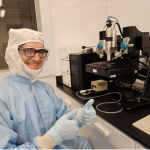 Eric Orson is a senior Barrett Fellow physics major working with Dr. Rhonda Stroud in the Buseck Center for Meteorite Studies. His work is centered around X-ray Computed Tomography (XCT) and electron microscopy analysis of carbonaceous chondrites. At LPSC he will present his research on constraining shock and thermal alteration in the Boorama CO3 chondrite using XCT and electron microprobe data. Boorama is a perfect sample to explore the effects of shock metamorphism on various alteration processes (mobilization of chromite, copper, etc.) since it experienced minimal terrestrial weathering and has a higher shock stage than most COs. This project is the first time a shock fabric has been successfully measured with XCT in a CO chondrite and it fills a gap in the data between CO3.1 and CO3.2 chondrites on the CO 3 chromium distribution scale.
Eric Orson is a senior Barrett Fellow physics major working with Dr. Rhonda Stroud in the Buseck Center for Meteorite Studies. His work is centered around X-ray Computed Tomography (XCT) and electron microscopy analysis of carbonaceous chondrites. At LPSC he will present his research on constraining shock and thermal alteration in the Boorama CO3 chondrite using XCT and electron microprobe data. Boorama is a perfect sample to explore the effects of shock metamorphism on various alteration processes (mobilization of chromite, copper, etc.) since it experienced minimal terrestrial weathering and has a higher shock stage than most COs. This project is the first time a shock fabric has been successfully measured with XCT in a CO chondrite and it fills a gap in the data between CO3.1 and CO3.2 chondrites on the CO 3 chromium distribution scale.
2024
 Anuva Anannya is a 2nd year Ph.D. student in the School of Earth and Space Exploration working with Drs. Rhonda Stroud, Kelin Whipple, and Philip Christensen. Her primary research focuses on martian surface processes with Drs. Whipple and Christensen and her secondary research is on the microstructure and mineralogy of presolar grains with Dr. Stroud. At LPSC, she will present her research on the microstructure and compositional analysis of a possible circumstellar-interstellar presolar grain-aggregate in the CM chondrite Asuka-12169. The results have important implications for the dust formation processes and conditions in the circumstellar and interstellar environments in which the aggregate grains have been hypothesized to have formed. This work was done in collaboration with Drs. Rhonda Stroud and Larry Nittler at ASU and Dr. Jens Barosch at the University of Wisconsin-Madison.
Anuva Anannya is a 2nd year Ph.D. student in the School of Earth and Space Exploration working with Drs. Rhonda Stroud, Kelin Whipple, and Philip Christensen. Her primary research focuses on martian surface processes with Drs. Whipple and Christensen and her secondary research is on the microstructure and mineralogy of presolar grains with Dr. Stroud. At LPSC, she will present her research on the microstructure and compositional analysis of a possible circumstellar-interstellar presolar grain-aggregate in the CM chondrite Asuka-12169. The results have important implications for the dust formation processes and conditions in the circumstellar and interstellar environments in which the aggregate grains have been hypothesized to have formed. This work was done in collaboration with Drs. Rhonda Stroud and Larry Nittler at ASU and Dr. Jens Barosch at the University of Wisconsin-Madison.
 Andrea Distel is a 3rd year Ph.D. candidate in the School of Earth and Space Exploration working with Drs. Meenakshi Wadhwa and Richard Hervig. Her research focuses on measuring trace hydrogen in nominally anhydrous minerals (NAMs) in lunar samples in the Secondary Ion Mass Spectrometry (SIMS) lab at ASU. At LPSC, Andrea will present a correlated data set for the water contents, hydrogen isotopes, and Fe and Cr valences in pyroxene and olivine for the lunar basaltic breccia meteorite Elephant Moraine (EET) 87521. This research specifically discusses the potential effects of secondary alteration processes that may have affected the D/H ratios in the NAMs of EET 87521, and therefore, has important implications for the lunar volatile community. This work was done in collaboration with Drs. Stephen Sutton and Antonio Lanzirotti at GSECARS and Dr. Jemma Davidson.
Andrea Distel is a 3rd year Ph.D. candidate in the School of Earth and Space Exploration working with Drs. Meenakshi Wadhwa and Richard Hervig. Her research focuses on measuring trace hydrogen in nominally anhydrous minerals (NAMs) in lunar samples in the Secondary Ion Mass Spectrometry (SIMS) lab at ASU. At LPSC, Andrea will present a correlated data set for the water contents, hydrogen isotopes, and Fe and Cr valences in pyroxene and olivine for the lunar basaltic breccia meteorite Elephant Moraine (EET) 87521. This research specifically discusses the potential effects of secondary alteration processes that may have affected the D/H ratios in the NAMs of EET 87521, and therefore, has important implications for the lunar volatile community. This work was done in collaboration with Drs. Stephen Sutton and Antonio Lanzirotti at GSECARS and Dr. Jemma Davidson.
 Cassandra Kraver is an undergraduate student in the School of Earth and Space Exploration working with Dr. Larry Nittler. Cassandra investigates isotopic anomalies of deuterium and nitrogen-15 in two Ryugu particles – A0079 and A0169 – using NanoSIMS measurements to characterize the sub-micron organic grains that make up these particles. This work assists in characterizing the diversity of isotopic compositions of these isotopically anomalous grains, which in turn indicates a diverse range of local environments during the grains’ formation. At LPSC, Cassandra will present her findings on these two Ryugu particles as well as the discovery of a highly unusual, tubular-shaped organic grain surrounding phyllosilicate material.
Cassandra Kraver is an undergraduate student in the School of Earth and Space Exploration working with Dr. Larry Nittler. Cassandra investigates isotopic anomalies of deuterium and nitrogen-15 in two Ryugu particles – A0079 and A0169 – using NanoSIMS measurements to characterize the sub-micron organic grains that make up these particles. This work assists in characterizing the diversity of isotopic compositions of these isotopically anomalous grains, which in turn indicates a diverse range of local environments during the grains’ formation. At LPSC, Cassandra will present her findings on these two Ryugu particles as well as the discovery of a highly unusual, tubular-shaped organic grain surrounding phyllosilicate material.
 Eamonn Needham is a 5th year Ph.D. candidate working with Dr. Mélanie Barboni on terrestrial magma storage conditions and testing long held assumptions of lunar geochemistry and petrology. Much of the geologic history of the early Moon formation has been based on geochemical analyses of seemingly pristine clasts within impact breccias from the Apollo missions sample returns. For over fifty years, the assumptions of the clast pristinity has been supported through textural observations of minerals within that clast. At LPSC, Eamonn will be presenting novel experimental and analytical results concerning aluminum in lunar zircon to geochemically demonstrate that the assumption of cogeneity and pristinity of clasts within lunar breccias does not actually hold, and even the most pristine clasts within lunar breccias exhibit pervasive chemical alteration. This calls into question the use of lunar whole-rock data, the late lunar formation hypothesis, and justification for the lunar formation model as a whole.
Eamonn Needham is a 5th year Ph.D. candidate working with Dr. Mélanie Barboni on terrestrial magma storage conditions and testing long held assumptions of lunar geochemistry and petrology. Much of the geologic history of the early Moon formation has been based on geochemical analyses of seemingly pristine clasts within impact breccias from the Apollo missions sample returns. For over fifty years, the assumptions of the clast pristinity has been supported through textural observations of minerals within that clast. At LPSC, Eamonn will be presenting novel experimental and analytical results concerning aluminum in lunar zircon to geochemically demonstrate that the assumption of cogeneity and pristinity of clasts within lunar breccias does not actually hold, and even the most pristine clasts within lunar breccias exhibit pervasive chemical alteration. This calls into question the use of lunar whole-rock data, the late lunar formation hypothesis, and justification for the lunar formation model as a whole.
2023
 Andrea Distel is a 2nd year PhD student in the School of Earth and Space Exploration working with Drs. Meenakshi Wadhwa, Jemma Davidson, and Richard Hervig. Her research focuses on measuring trace hydrogen in nominally anhydrous minerals (NAMs) in lunar samples in the Secondary Ion Mass Spectrometry (SIMS) lab at ASU. At LPSC, Andrea will present a new data set for the water contents and hydrogen isotopes in pyroxene and olivine for the lunar basaltic breccia meteorite Elephant Moraine (EET) 87521. This research specifically discusses the potential effects of secondary alteration processes that may have affected the D/H ratios in the NAMs of EET 87521, and therefore, has important implications for the lunar volatile community.
Andrea Distel is a 2nd year PhD student in the School of Earth and Space Exploration working with Drs. Meenakshi Wadhwa, Jemma Davidson, and Richard Hervig. Her research focuses on measuring trace hydrogen in nominally anhydrous minerals (NAMs) in lunar samples in the Secondary Ion Mass Spectrometry (SIMS) lab at ASU. At LPSC, Andrea will present a new data set for the water contents and hydrogen isotopes in pyroxene and olivine for the lunar basaltic breccia meteorite Elephant Moraine (EET) 87521. This research specifically discusses the potential effects of secondary alteration processes that may have affected the D/H ratios in the NAMs of EET 87521, and therefore, has important implications for the lunar volatile community.
 Mara Karageozian is a 5th year PhD candidate in the School of Earth and Space Exploration working with Dr. Tom Sharp. Her primary research investigates how impact processes affect the K-Ar isotopic system in naturally shocked ordinary chondrites. Her work documents an isotopic artifact that results in artificially old impact ages in moderately to heavily shocked meteorites. Without considering this artifact, impact age and the number of impact events may be misinterpreted. At LPSC, Mara will present her results documenting 40Ar/39Ar age artifacts in some of the most ancient L, H, and LL meteorites. She uses these results to discuss best practices for impact age interpretation moving forward. This work was done in collaboration with Mara’s advisor, Dr. Tom Sharp, and Dr. Chris McDonald of the Group 18 Laboratories in SESE.
Mara Karageozian is a 5th year PhD candidate in the School of Earth and Space Exploration working with Dr. Tom Sharp. Her primary research investigates how impact processes affect the K-Ar isotopic system in naturally shocked ordinary chondrites. Her work documents an isotopic artifact that results in artificially old impact ages in moderately to heavily shocked meteorites. Without considering this artifact, impact age and the number of impact events may be misinterpreted. At LPSC, Mara will present her results documenting 40Ar/39Ar age artifacts in some of the most ancient L, H, and LL meteorites. She uses these results to discuss best practices for impact age interpretation moving forward. This work was done in collaboration with Mara’s advisor, Dr. Tom Sharp, and Dr. Chris McDonald of the Group 18 Laboratories in SESE.
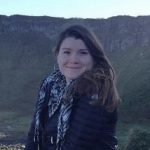 Nicole Phelan is a 2nd year MS student in the School of Earth and Space Exploration working with Dr. Meenakshi Wadhwa in the Isotope Cosmochemistry and Geochronology Laboratory (ICGL). Her research focuses on measuring the Ti isotope compositions of carbonaceous chondrites (CC) using Multicollector-Inductively Coupled Plasma Mass Spectrometry (MC-ICPMS). At LPSC, Nicole will present new measurements of the Ti isotope compositions of the bulk sample of several carbonaceous chondrites. This work seeks to characterize the variability of Ti isotope compositions within the CC group and has implications for the degree of isotopic heterogeneity in the solar nebula, particularly within the CC reservoir.
Nicole Phelan is a 2nd year MS student in the School of Earth and Space Exploration working with Dr. Meenakshi Wadhwa in the Isotope Cosmochemistry and Geochronology Laboratory (ICGL). Her research focuses on measuring the Ti isotope compositions of carbonaceous chondrites (CC) using Multicollector-Inductively Coupled Plasma Mass Spectrometry (MC-ICPMS). At LPSC, Nicole will present new measurements of the Ti isotope compositions of the bulk sample of several carbonaceous chondrites. This work seeks to characterize the variability of Ti isotope compositions within the CC group and has implications for the degree of isotopic heterogeneity in the solar nebula, particularly within the CC reservoir.
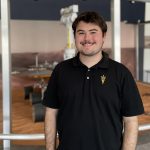 Lucas Reynoso is a 4th-year Barrett undergraduate student majoring in Mechanical Engineering and is interested in understanding the chemistry of ocean worlds. As a NASA Space Grant intern, his current research focus with Dr. Maitrayee Bose is to develop analogs for the dwarf planet Ceres and characterize how organics may be encapsulated and preserved in evaporitic material under Ceres-like conditions. As the most recent Planetary Decadal Survey 2023-2032 proposes several missions to ocean worlds, the work is highly pertinent to furthering our understanding of the probability of organic survival and how this can influence the environmental requirements set for sample collection from ocean world bodies. At the Lunar and Planetary Science Conference, Lucas will present the preliminary results from several analysis techniques that confirm the incorporation of intact amino acid glycine molecules in sodium chloride salt and the resulting change in the pore-size distribution of the salt crystals.
Lucas Reynoso is a 4th-year Barrett undergraduate student majoring in Mechanical Engineering and is interested in understanding the chemistry of ocean worlds. As a NASA Space Grant intern, his current research focus with Dr. Maitrayee Bose is to develop analogs for the dwarf planet Ceres and characterize how organics may be encapsulated and preserved in evaporitic material under Ceres-like conditions. As the most recent Planetary Decadal Survey 2023-2032 proposes several missions to ocean worlds, the work is highly pertinent to furthering our understanding of the probability of organic survival and how this can influence the environmental requirements set for sample collection from ocean world bodies. At the Lunar and Planetary Science Conference, Lucas will present the preliminary results from several analysis techniques that confirm the incorporation of intact amino acid glycine molecules in sodium chloride salt and the resulting change in the pore-size distribution of the salt crystals.
 Leah Shteynman is a PhD student in the School of Earth and Space Exploration working with Professor Tom Sharp. Her research focuses on how impact cratering events affect the structure and chemistry of zircon. Leah’s current work explores how shock metamorphism can change zircon in ways that affect its use as a geochronometer. At LPSC, she will present the first U-Pb SIMS analyses of natural reidite, the high pressure polymorph of zircon formed during impact events. These results will help us more fully understand the zircon-reidite phase transition, which is necessary to accurately assess zircon’s utility in impact dating.
Leah Shteynman is a PhD student in the School of Earth and Space Exploration working with Professor Tom Sharp. Her research focuses on how impact cratering events affect the structure and chemistry of zircon. Leah’s current work explores how shock metamorphism can change zircon in ways that affect its use as a geochronometer. At LPSC, she will present the first U-Pb SIMS analyses of natural reidite, the high pressure polymorph of zircon formed during impact events. These results will help us more fully understand the zircon-reidite phase transition, which is necessary to accurately assess zircon’s utility in impact dating.
2022
 Samuel Courville
Samuel CourvilleSamuel Courville is a PhD student in the School of Earth and Space Exploration working with Assistant Professor Joseph O’Rourke. Sam is studying how asteroids and planets formed at the dawn of the Solar System. He connects spacecraft observations of asteroids to mineralogy data from meteorites and theoretical astrophysical models of the early Solar System. At LPSC, Sam will demonstrate that two large non-metallic C-type asteroids, 10 Hygiea and 24 Themis, could have magnetic fields as a byproduct of forming in the solar nebula. This is an important result because it is a testable prediction of asteroid formation theories. He will argue at LPSC that sending a magnetometer to these asteroids would be a way to test if our understanding of their formation is correct.
 Andrea Distel
Andrea DistelAndrea Distel is a 1st year PhD student in the School of Earth and Space Exploration working with Drs. Rick Hervig, Jemma Davidson, and Meenakshi Wadhwa. Her research focuses on measuring trace hydrogen in nominally anhydrous minerals (NAMs) in the Secondary Ion Mass Spectrometry (SIMS) lab at ASU. Specifically, she studies trace hydrogen in minerals from lunar samples, and works on improving SIMS analyses for this element in NAMs. At LPSC, Andrea will present a fresh perspective on analytical procedures and selection of standards for SIMS analyses of hydrogen in NAMs. This research provides information to the SIMS community conducting these measurements on how to improve these analyses, which is an area of active debate and research.
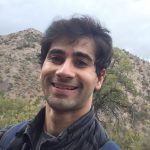 Aditya Khuller
Aditya KhullerAditya Khuller is a 3rd year PhD student in the School of Earth and Space Exploration working under Dr. Phil Christensen. His research focuses on studying ices (H2O and CO2) on Mars. In particular, he is studying whether ice is melting on Mars today, after noticing that ice exposed at the surface in the martian mid-latitudes was disappearing after a few years. Because turbulence and solar radiation are the two biggest contributors to ice melting, at LPSC, he will be presenting results of an atmospheric turbulence model he has been developing with co-author Gary Clow. This model simulates the energy lost to the atmosphere by ice on Mars. The results from this model were validated against in-situ measurements of ice at Mars during the Phoenix lander mission in 2008. He will combine these results with his past solar radiation modeling to assess whether ice is melting on Mars today. If the ice is indeed melting, then the presence of this near-surface liquid water would have compelling implications for potential past or extant life, and the future of robotic and human exploration on Mars.
 Srinidhi Ravi
Srinidhi RaviSrinidhi Ravi is a 5th year PhD candidate in the School of Earth and Space Exploration working with Professor Mark Robinson. Her research focuses on the lithospheric evolution of the lunar Procellarum KREEP (potassium (K), rare earth elements (REE), and phosphorus (P)) Terrane (PKT). The PKT hosts the largest population of floor-fractured craters, which are impact craters that underwent subsequent modification due to volcano-tectonic processes and, as a result, these landforms serve as time capsules for local and regional lithospheric deformation in early lunar history. At LPSC, Srinidhi will present preliminary results on lithospheric strength envelopes on the Moon at 4 Ga. The results confirm that the rheology of anorthosite coupled with the spatial distribution of floor-fractured craters are in fact favorable for viscous relaxation early lunar geologic history.
 Kevin Trinh
Kevin TrinhKevin Trinh is a 2nd year PhD student in the School of Earth and Space Exploration who is primarily interested in the formation, evolution, and potential habitability of icy moons. At LPSC, Kevin will explore one key question: When did Europa start forming its metallic core? Previous models typically assume that Europa formed its metallic core immediately or shortly after accretion. However, the timing of Europa’s metallic core formation has profound implications for Europa’s thermal evolution, magnetic history, and subsurface ocean habitability. Using a parameterized thermal evolution model, Kevin argues that Europa may have spent most of its life without a fully formed metallic core. This work was done in collaboration with Kevin’s advisor, Assistant Professor Joe O’Rourke, and with Postdoctoral Fellow Carver Bierson.
2021
 Claire Blaske
Claire Blaske
Claire Blaske is an undergraduate in the School of Earth and Space Exploration. Her research with Assistant Professor Joseph O’Rourke focuses on the prospects for dynamos in the metallic cores of massive rocky planets. At LPSC, Claire will present her calculations of the critical thresholds at which thermal and chemical convection will occur in the core for a range of planetary masses, thus inferring a planet’s ability to produce a dynamo. Dynamos in the cores of planets can produce magnetic fields, so detecting these magnetic fields is perhaps the best way to constrain how fast an exoplanet’s deep interior is cooling. Whether a magnetic field reveals anything about a planet’s surface and atmosphere is an open question. Her research has shown that, as a planet’s mass increases, the likelihood of a dynamo occurring also increases. Massive planets with and without plate tectonics and habitable surfaces (super-Earth and super-Venus planets, respectively) could both have strong magnetic fields.
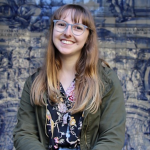 Madison Borrelli
Madison BorrelliMadison Borrelli is a 2nd year PhD student in the School of Earth and Space Exploration. Her work with Assistant Professor Joseph O’Rourke focuses on volcanic features on Venus. At LPSC, she will present the results from her global survey of lithospheric thickness at steep-sided dome volcanoes. These features, also called “pancake domes”, are expected to form where the lithospheric thickness is between 10 and 40 km. However, this hypothesis has not yet been tested. Madison used evidence of lithospheric flexure around the domes to confirm that they are indeed generally found at locations of intermediate elastic thickness.
 Jasmine Garani
Jasmine GaraniJasmine Garani is a PhD student in the School of Earth and Space Exploration working with Associate Research Professor James Lyons. Her research focuses on understanding the formation of the Solar System, specifically the processes that led to isotopic enrichments seen on Earth and in meteorites. She is mainly focused on nitrogen isotopes, and at LPSC will present an updated solar nebula model with the potential of explaining the 15N enrichments seen in the Solar System today. Her investigation of nitrogen isotopes explores the chemical processes that formed meteoritic amino acids, which also show high enrichments in 15N. Her work has direct implications for understanding the UV radiation environment present during the formation of the Solar System, as well as understanding the reservoir of organic materials available as building blocks of life on early Earth, Venus, and Mars.
 Kevin Trinh
Kevin TrinhKevin Trinh is a PhD student in the School of Earth and Space Exploration working with Assistant Professor Joseph O’Rourke and Postdoctoral Research Scholar Carver Bierson. His research focuses on the connection between deep interior processes and the potential for life, with an emphasis on icy moons and the use of geochemical models to explore the persistence of habitability in ocean worlds. At LPSC, Kevin will demonstrate that Jupiter’s moon, Europa, may have formed its metallic core billions of years after accretion. This challenges the assumption that Europa dehydrated its silicates and possessed a metallic core immediately after accretion, which would result in unrealistically warm thermal histories.
 Qian Yuan
Qian YuanQian Yuan is a PhD candidate in the School of Earth and Space Exploration working with Assistant Professor Mingming Li, Professor Richard Hervig, and Professor Steven Desch. His primary research goal is to integrate planetary interior dynamics with surface expressions, specifically using computer simulation and thermodynamic modelling to understand the origin of Large Low Shear Velocity provinces (LLSVPs), which are the largest mantle heterogeneities. At LPSC, he and his co-authors will propose a very new origin of the LLSVPs: The Moon-forming Giant Impact. Their research shows that LLSVPs may represent the mantle remnants of the impactor Theia, a large (> Mars-size) planetary embryo that collided with the proto-Earth. Thus, continental-sized LLSVPs may serve as both the largest and oldest “meteorites” on Earth. This study highlights the long-lasting effect of the Giant Impact on Earth’s thermal and chemical evolution, and indicates similar mantle heterogeneities may be formed by a similar process on other terrestrial planets.
2020
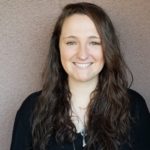 Madeline Marquardt
Madeline MarquardtMadeline is a 4th year undergraduate student studying Astrobiology. Her research with Professors Thomas Sharp and Mélanie Barboni focuses on impacted meteorites from the asteroid Vesta. Having characterized the petrography and impact history of her sample (NWA 8677), she now focuses on zircon grains present. Using zircon as an extremely old and reliable clock, she can analyze all of the zircon of sufficient size in her sample to obtain high-spatial resolution U-Pb ages by Secondary Ion Mass Spectrometry (SIMS). These ages will put timestamps on when impact events were occurring on Vesta and the crystallization age of zircon. Further analyses of element substitution (Ti, Al, Mg, Fe) in zircon by SIMS will aid in determining the initial bulk composition of the magma ocean and apparent crystallization temperature of zircon. The brilliant potential of zircon in meteorites will help to better understand the impact and geologic history of early-formed bodies in our Solar System.
Read Madeline’s LPSC abstract, here!
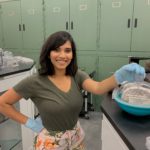 Soumya Ray
Soumya RaySoumya is a PhD candidate in the School of Earth and Space Exploration working with Professor Meenakshi Wadhwa. Her research focuses on measuring the stable isotope composition of meteorites in the Isotope Cosmochemistry and Geochronology Laboratory at ASU. Specifically, she studies the Fe and Si isotope composition of a variety of bulk achondrites as well as mineral separates from these achondrites. At LPSC, she will present a new method for the purification of Fe and Si from the same aliquots of digested and dissolved samples. A coupled investigation of both Fe and Si isotopes in bulk meteorites and mineral separates could provide important constraints on processes occurring during accretion and differentiation of meteorite parent bodies and help answer whether Fe and Si isotopes fractionate during core formation.
Read Soumya’s LPSC abstract, here!
 Vishaal Singh
Vishaal SinghVishaal is a PhD candidate in Geological Sciences at ASU’s School of Earth and Space Exploration, working with Professor Steve Desch and Dr. Alyssa Rhoden on Ocean World exploration. Using a three-pronged (or ‘Trident’) approach, Vishaal is developing techniques to probe the thermomechanical and compositional properties of dynamic ice shells, viewed as a remote sensing target, a site for in situ exploration, and through the depth of the shell. He combines investigations on Jupiter’s moon Europa, using remote sensing data (photometry), lab studies & modeling (ice spectroscopy and mechanics), and instrumentation development, to identify the limits of our diagnostic capabilities and new pathways for exploration. In this abstract, Vishaal and his co-authors explore the interrelationship between grain size, chemical composition, radiation processing, and thermal cycling of ice samples (and their spectra) in the lab, and test how they alter our current understanding of Europa’s surface – this is necessary to identify the likely locations of recent activity where we may find biosignatures. They find that the collected lab spectra change due to these listed parameters, but also differ from previous modeling efforts, particularly for the 1.65 μm water-ice band which is used to assess the crystallinity of the surface. This has significant implications for our understanding of how Europa’s surface ice evolves with temperature and radiation.
Read Vishaal’s LPSC abstract, here!
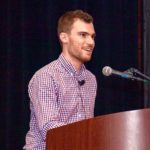 Zack Torrano
Zack TorranoZack is a PhD candidate in the School of Earth and Space Exploration advised by Professor Meenakshi Wadhwa. At LPSC, he will be presenting his work on the combined Cr, Ti, and O isotopic systematics of meteorites that was conducted in the Isotope Cosmochemistry and Geochronology Laboratory at ASU. These combined isotope systems are used to trace genetic relationships between meteorites, and the goal of this work is to measure the isotopic compositions of ungrouped chondrites for the purpose of evaluating the relationship between CM and CO chondrites. Studies of CM (and CM-like ungrouped) chondrites are particularly important as these meteorites may be analogs for the carbonaceous asteroids targeted by the ongoing OSIRIS-REx and Hayabusa2 sample return missions.
Read Zack’s LPSC abstract, here!
2019
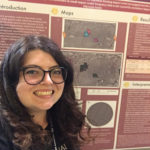 Sierra Ferguson
Sierra Ferguson Sierra is a PhD candidate in ASU’s School of Earth and Space Exploration working with Professor Steve Desch and Dr. Alyssa Rhoden. Her research focuses on understanding the history of Saturn’s mid-sized moons with a focus on Tethys, Dione, and Rhea. The work she does utilizes data from the Cassini spacecraft to create maps of the surfaces of these moons. Recently, she has mapped the impact craters on Dione and found that their likely impactor source would be from Saturn-orbiting debris. When examining the azimuths of elliptical craters on Dione, she and her co-authors found no variation across hemispheres, whereas the same crater morphology on Tethys exhibits variation in azimuth values across the leading and trailing hemispheres. This result implies a similar impactor population creating the elliptical craters on Dione, whereas these craters on Tethys may have been formed by several different sources. An overarching goal of her research is to aid in the determination of the ages of the mid-sized Saturnian satellites. Read Sierra’s LPSC abstract here.
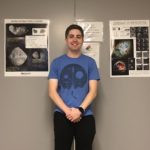 Jack Schulte
Jack Schulte Jack is a 2nd year undergraduate student studying Physics with a minor in Astrophysics. He is working with Dr. Maitrayee Bose in the Center for Isotope Analysis, researching presolar grains. His work focuses on using new and realistic three-dimensional supernova models to constrain the origins of silicon carbide (SiC) and silicon nitride grains. He intends to use isotopes of light and heavy elements to understand the nucleosynthesis occurring in supernova ejecta, with the eventual goal being to expand our understanding of the nature of supernova that seeded the solar nebula. At LPSC, he presented the results of his analysis of four supernova models, one symmetric and three asymmetric. He showed that two of the asymmetric models worked best to explain the C, N, Si, Al, Fe and Ni isotopic compositions of SiC grains. Read Jack’s LPSC abstract here.
2018
 Daniel Dunlap
Daniel DunlapDaniel is a 5th year PhD candidate studying under Professor Meenakshi Wadhwa in the Isotope Cosmochemistry and Geochronology Lab at ASU. He uses both short-lived (Al-Mg and Mn-Cr) and long-lived (Pb-Pb) isotope systems to determine high precision ages of achondrites; achondrites are meteorites that have experienced varying degrees of heating which took place in the earliest epoch of Solar System history. His work specifically focuses on the ungrouped and underrepresented achondrites. By studying these achondrites, he hopes to expand our understanding of the timeline of igneous activity in the early Solar System. Read Daniel’s LPSC abstract here.
 Sierra Ferguson
Sierra Ferguson Sierra is a Ph.D. student in ASU’s School of Earth and Space Exploration, working with Professor Alyssa Rhoden. Her research currently focuses on the mid-sized moons of the Saturnian system, with a focus on Tethys, Rhea, and Dione. The investigations that she is conducting on these moons involve the tectonic structures, craters, and other surface features of the moons. She utilizes ArcGIS for the mapping of these surface features on mosaics that she created from the raw Cassini image data. An overarching goal of her research is to analyze the bombardment history of Saturn’s moons to aid in the determination of the ages of the mid-sized Saturnian satellites. Read Sierra’s LPSC abstract here.
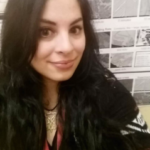 Alexandra Perez
Alexandra PerezAlexandra recently completed her M.S. studies with Professor Steve Desch in the ASU School of Earth and Space Exploration. Her research involves investigating the validity of the planetary embryo bow shock model by conducting dynamic crystallization experiments. Her results show that the most dominant chondrule texture, porphyritic, requires cooling rates < 1000 K/hr to form. The planetary embryo bow shock model therefore is a viable chondrule mechanism for the formation of most chondrules, although lower cooling rates would be preferred. Cooling rates in the bow shock model are inversely proportional to planet size, suggesting that the bow shock around a planetary embryo larger than Mars may better produce porphyritic textures. These results imply that large planetary embryos were present and on eccentric orbits during the first few million years of the Solar System’s history. Read Alexandra’s LPSC abstract here.
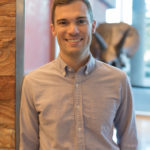 Zachary Torrano
Zachary TorranoZack is a Ph.D. candidate in the Center for Meteorite Studies, studying under Professor Meenakshi Wadhwa. He studies calcium-aluminum-rich inclusions (CAIs), which were the first solids formed in the early Solar System and thus preserve a record of the earliest processes and conditions in the solar nebula. At LPSC, he presented high-precision Cr, Ti, and Mg isotope measurements of a suite of CAIs that were analyzed on the Neptune MC-ICP-MS in ASU’s Isotope Cosmochemistry and Geochronology Laboratory. These samples showed resolvable mass-independent anomalies in both Ti and Cr isotopes, suggesting significant isotopic heterogeneity in the broader CAI-forming region in the protoplanetary disk. The “bulk” Al-Mg isochron yields a canonical 26Al/27Al value, consistent with homogeneous distribution of 26Al in the solar nebula. Read Zack’s LPSC abstract here.
2017
 Emilie Dunham
Emilie DunhamEmilie is a Ph.D. candidate in the Center for Meteorite Studies, studying under Professor Meenakshi Wadhwa. She analyzes the oldest Solar System rocks (calcium-aluminum-rich inclusions) in order to learn about the violent environment in which they were formed. Specifically, she utilizes mass spectrometry techniques to infer the abundances of elements which only existed in the early Solar System; these analyses provide insight into events that occurred more than 4.56 billion years ago, such as irradiation processes, where high-energy particles collide with nebular gas to produce new elements. Emilie is also advised by Dr. Steven Desch on a secondary project, with the goal of understanding the composition of the Kuiper Belt Object (KBO) Haumea. This KBO likely suffered a large collision which influenced its shape (it is football shaped), and Emilie’s research indicates that Haumea has a hydrated silicate/clay core surrounded by a thin (~10km) icy shell. This composition hints that Haumea could have been habitable in the past! Read Emilie’s abstracts
here, and
here!
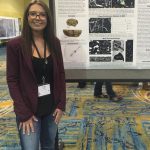 Crystylynda Fudge
Crystylynda FudgeCrystyl is a Ph.D. candidate studying shocked meteorites to understand impact conditions on planetary bodies, under the mentorship of advisor Dr. Thomas Sharp. In her research, she uses a combination of optical microscopy, scanning electron microscopy and electron probe microanalysis to investigate transformation and recrystallization textures, and Raman spectroscopy to identify high-pressure mineral assemblages. At LPSC, she presented results on a eucrite containing a range of shock-induced effects, including high-pressure polymorphs of silica and feldspar. Her future work will include further characterization of shock features in HED meteorites and constraining shock pressure-temperature conditions to understand impacts on the asteroid 4 Vesta.
Read Crystyl’s abstract here! Viranga Perera
Viranga PereraViranga is a Ph.D candidate working with Professor Erik Asphaug. His research areas include the thermal evolution of the Moon, interior structures of asteroids, and the link between the affective domain and online science education. At LPSC, he presented work showing that, due to re-impacting debris, the magma ocean of the Moon likely cooled faster than is currently considered.
Read Viranga’s abstract here!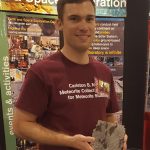 Zachary Torrano
Zachary TorranoZack is a Ph.D. candidate in the Center for Meteorite Studies, studying under Professor Meenakshi Wadhwa. He studies calcium-aluminum-rich inclusions (CAIs), which were the first solids formed in the early Solar System and, thus, preserve a record of the earliest processes and conditions in the solar nebula. At LPSC, he presented high-precision Ti and Cr isotope measurements from a new suite of CAIs that were analyzed on the Neptune MC-ICP-MS in ASU’s Isotope Cosmochemistry and Geochronology Laboratory. These samples show resolvable variations in mass-independent anomalies in both Ti and Cr isotopes, suggesting significant isotopic heterogeneity in the broader CAI-forming region in the protoplanetary disk. His future work will seek to expand this sample set and characterize the nature of this heterogeneity.
Read Zack’s abstract here!
2016
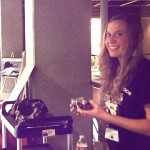 Emilie Dunham
Emilie DunhamFurther evidence of beryllium-10 heterogeneity in the early solar system inferred from Be-B systematics of refractory inclusions in a minimally altered CR2 chondrite.
Emilie is currently in the second year of her Ph.D., studying in the Center for Meteorite, under Professor Meenakshi Wadhwa. Her research focuses on determining the chemical and isotopic composition of meteorite components, to better understand the astrophysical birthplace of our Solar System. She analyzes Calcium Aluminum-rich Inclusions (CAIs); as the first solids to condense from the solar nebula, they recorded the earliest events that shaped the Solar System. Specifically, she is measuring the concentration of 10Be in CAIs using ASU’s SIMS (Secondary Ion Mass Spectrometer) in order to tell the story of its formation.
 Ehsan Gharib-Nezhad
Ehsan Gharib-NezhadSimulating haze particles in a H2-rich exoplanet atmosphere with high temperature discharge experiments.
Ehsan received his M.S. in physical chemistry from the University of Tehran at Iran, in 2013. His thesis focussed on the spectroscopy of diatomic molecules of astrophysical interest. Upon completion of his master’s degree, his enthusiasm for astrochemistry lead him to apply to ASU, where he is currently working toward his Ph.D. under the supervision of Professor James Lyons, in the School of Earth and Space Exploration. To date, his studies have included the determination of oxygen isotope ratios in the solar photosphere (using the observationed CO infrared spectrum), as well as laboratory simulation of haze/aerosol formation in exoplanet atmospheres. While these projects may, initially, seem quite different from each other, they share the common goal of improving our understanding and interpretation of observed astronomical spectra.
 Cameron Mercer
Cameron MercerExploring non-uniform 40Ar* loss in Apollo 16 impact melt breccias using a laser microprobe.
At LPSC, Cameron presented 139 new spot fusion 40Ar/39Ar dates for three samples from the Apollo 16 sample archive. Published incremental heating 40Ar/39Ar data for two of these samples exhibit low apparent ages at low experimental temperatures, and higher apparent ages at intermediate to high experimental temperatures. These release spectra were interpreted to indicate that the samples had experienced partial loss of radiogenic 40Ar (denoted 40Ar*) following their formation, due to one or more reheating events. The laser microprobe is a useful tool for exploring the spatial variability of argon loss in such samples while preserving the petrographic context of the dated materials. Combined with ongoing work, the laser microprobe 40Ar/39Ar data will help to constrain the thermal histories recorded by these samples. Cameron is a Ph.D. candidate in the School of Earth & Space Exploration, studying under Professor Kip Hodges.
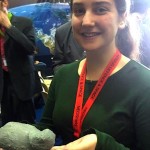 Jessica Noviello
Jessica NovielloOrder from chaos: A quantitative approach to identifying small chaos features on Europa.
Jessica Noviello is a second year Ph.D. student in the School of Earth & Space Exploration, studying under Professor Alyssa Rhoden. Her LPSC presentation explored the color data taken of Europa during the Galileo mission, in order to classify small chaos patches. Chaos usually presents as redder than the surrounding terrain and other small-scale features such as pits, spots, and domes. The red color is believed to be evidence of salts on Europa’s surface, and implies that liquid water exists at, or near, the surface around chaos patches. Combining the color data with other observational characteristics could enable the identification of small patches of chaos in low-resolution (> 1 km/pixel) images of Europa, yielding more data on the global frequency of chaos patches. This new information would help constrain heat-flux models of chaos model formation and make testable predictions for the upcoming Europa Flyby Flagship mission. Knowing how chaos forms could indicate where liquid water is most likely to be located, and guide the search for extraterrestrial life on Europa.
 Victoria Concepcion is a 2nd year Ph.D. student in the School of Earth and Space Exploration, working with Dr. Craig Hardgrove on Martian surface geology. Her research utilizes data from the Dynamic Albedo of Neutrons (DAN) instrument on the Curiosity rover to investigate subsurface hydration in Gale Crater. At LPSC, she will present her findings on hydration and elemental trends within the Clay-Sulfate Transition Zone, where the rover has identified hydrated sulfates such as gypsum, starkeyite, and others. Her results provide critical insights into the correlation between subsurface hydration measurements from DAN and mineralogical and elemental observations from other rover instruments. This work contributes to reconstructing the geological history of Gale Crater and improving our understanding of past aqueous processes on Mars. Her research is conducted in collaboration with Sean Czarnecki, Rachel Sheppard, and the Mars Science Laboratory Curiosity Rover Team.
Victoria Concepcion is a 2nd year Ph.D. student in the School of Earth and Space Exploration, working with Dr. Craig Hardgrove on Martian surface geology. Her research utilizes data from the Dynamic Albedo of Neutrons (DAN) instrument on the Curiosity rover to investigate subsurface hydration in Gale Crater. At LPSC, she will present her findings on hydration and elemental trends within the Clay-Sulfate Transition Zone, where the rover has identified hydrated sulfates such as gypsum, starkeyite, and others. Her results provide critical insights into the correlation between subsurface hydration measurements from DAN and mineralogical and elemental observations from other rover instruments. This work contributes to reconstructing the geological history of Gale Crater and improving our understanding of past aqueous processes on Mars. Her research is conducted in collaboration with Sean Czarnecki, Rachel Sheppard, and the Mars Science Laboratory Curiosity Rover Team. Christian Kroemer is a 3rd Year Ph.D. student in the School of Earth & Space Exploration at Arizona State University working with Dr. Sujoy Mukhopadhyay. His research focuses on noble gases in Martian meteorites to study Mars’ accretion, early history, and evolution. At LPSC, he will present krypton isotopic measurements across multiple groups of Martian meteorites, represented by Zagami, Los Angeles, Lafayette, and ALH 77005. This research presents further evidence for the potential for a chondritic source as the origin of volatiles across much of Mars’ interior and the consequences for planetary accretion on Mars and other terrestrial planets. This work was done in collaboration with Dr. Sandrine Peron at CNRS Université d’Orléans.
Christian Kroemer is a 3rd Year Ph.D. student in the School of Earth & Space Exploration at Arizona State University working with Dr. Sujoy Mukhopadhyay. His research focuses on noble gases in Martian meteorites to study Mars’ accretion, early history, and evolution. At LPSC, he will present krypton isotopic measurements across multiple groups of Martian meteorites, represented by Zagami, Los Angeles, Lafayette, and ALH 77005. This research presents further evidence for the potential for a chondritic source as the origin of volatiles across much of Mars’ interior and the consequences for planetary accretion on Mars and other terrestrial planets. This work was done in collaboration with Dr. Sandrine Peron at CNRS Université d’Orléans. Alexander Layman is a senior Astrophysics and Physics major working with SESE Prof. Jim Bells’ group on Mastcam data analysis. His research focuses on developing methods for detecting iron-nickel meteorites on the surface of Mars by employing the Mastcam multi-spectral imager onboard the NASA Mars Science Laboratory Curiosity rover. He is using three techniques -decorrelation stretch, collecting spectral ratios, and extracting relative reflectancesto find spectral consistencies to identify the meteorites. Once located, these Iron-nickel meteorites can reveal atmospheric and surface processes that influence environmental conditions on Mars. Alex’s current work extends previous searches by exploring Sols 3000-3953.
Alexander Layman is a senior Astrophysics and Physics major working with SESE Prof. Jim Bells’ group on Mastcam data analysis. His research focuses on developing methods for detecting iron-nickel meteorites on the surface of Mars by employing the Mastcam multi-spectral imager onboard the NASA Mars Science Laboratory Curiosity rover. He is using three techniques -decorrelation stretch, collecting spectral ratios, and extracting relative reflectancesto find spectral consistencies to identify the meteorites. Once located, these Iron-nickel meteorites can reveal atmospheric and surface processes that influence environmental conditions on Mars. Alex’s current work extends previous searches by exploring Sols 3000-3953. Eric Orson is a senior Barrett Fellow physics major working with Dr. Rhonda Stroud in the Buseck Center for Meteorite Studies. His work is centered around X-ray Computed Tomography (XCT) and electron microscopy analysis of carbonaceous chondrites. At LPSC he will present his research on constraining shock and thermal alteration in the Boorama CO3 chondrite using XCT and electron microprobe data. Boorama is a perfect sample to explore the effects of shock metamorphism on various alteration processes (mobilization of chromite, copper, etc.) since it experienced minimal terrestrial weathering and has a higher shock stage than most COs. This project is the first time a shock fabric has been successfully measured with XCT in a CO chondrite and it fills a gap in the data between CO3.1 and CO3.2 chondrites on the CO 3 chromium distribution scale.
Eric Orson is a senior Barrett Fellow physics major working with Dr. Rhonda Stroud in the Buseck Center for Meteorite Studies. His work is centered around X-ray Computed Tomography (XCT) and electron microscopy analysis of carbonaceous chondrites. At LPSC he will present his research on constraining shock and thermal alteration in the Boorama CO3 chondrite using XCT and electron microprobe data. Boorama is a perfect sample to explore the effects of shock metamorphism on various alteration processes (mobilization of chromite, copper, etc.) since it experienced minimal terrestrial weathering and has a higher shock stage than most COs. This project is the first time a shock fabric has been successfully measured with XCT in a CO chondrite and it fills a gap in the data between CO3.1 and CO3.2 chondrites on the CO 3 chromium distribution scale. Anuva Anannya is a 2nd year Ph.D. student in the School of Earth and Space Exploration working with Drs. Rhonda Stroud, Kelin Whipple, and Philip Christensen. Her primary research focuses on martian surface processes with Drs. Whipple and Christensen and her secondary research is on the microstructure and mineralogy of presolar grains with Dr. Stroud. At LPSC, she will present her research on the microstructure and compositional analysis of a possible circumstellar-interstellar presolar grain-aggregate in the CM chondrite Asuka-12169. The results have important implications for the dust formation processes and conditions in the circumstellar and interstellar environments in which the aggregate grains have been hypothesized to have formed. This work was done in collaboration with Drs. Rhonda Stroud and Larry Nittler at ASU and Dr. Jens Barosch at the University of Wisconsin-Madison.
Anuva Anannya is a 2nd year Ph.D. student in the School of Earth and Space Exploration working with Drs. Rhonda Stroud, Kelin Whipple, and Philip Christensen. Her primary research focuses on martian surface processes with Drs. Whipple and Christensen and her secondary research is on the microstructure and mineralogy of presolar grains with Dr. Stroud. At LPSC, she will present her research on the microstructure and compositional analysis of a possible circumstellar-interstellar presolar grain-aggregate in the CM chondrite Asuka-12169. The results have important implications for the dust formation processes and conditions in the circumstellar and interstellar environments in which the aggregate grains have been hypothesized to have formed. This work was done in collaboration with Drs. Rhonda Stroud and Larry Nittler at ASU and Dr. Jens Barosch at the University of Wisconsin-Madison. Andrea Distel is a 3rd year Ph.D. candidate in the School of Earth and Space Exploration working with Drs. Meenakshi Wadhwa and Richard Hervig. Her research focuses on measuring trace hydrogen in nominally anhydrous minerals (NAMs) in lunar samples in the Secondary Ion Mass Spectrometry (SIMS) lab at ASU. At LPSC, Andrea will present a correlated data set for the water contents, hydrogen isotopes, and Fe and Cr valences in pyroxene and olivine for the lunar basaltic breccia meteorite Elephant Moraine (EET) 87521. This research specifically discusses the potential effects of secondary alteration processes that may have affected the D/H ratios in the NAMs of EET 87521, and therefore, has important implications for the lunar volatile community. This work was done in collaboration with Drs. Stephen Sutton and Antonio Lanzirotti at GSECARS and Dr. Jemma Davidson.
Andrea Distel is a 3rd year Ph.D. candidate in the School of Earth and Space Exploration working with Drs. Meenakshi Wadhwa and Richard Hervig. Her research focuses on measuring trace hydrogen in nominally anhydrous minerals (NAMs) in lunar samples in the Secondary Ion Mass Spectrometry (SIMS) lab at ASU. At LPSC, Andrea will present a correlated data set for the water contents, hydrogen isotopes, and Fe and Cr valences in pyroxene and olivine for the lunar basaltic breccia meteorite Elephant Moraine (EET) 87521. This research specifically discusses the potential effects of secondary alteration processes that may have affected the D/H ratios in the NAMs of EET 87521, and therefore, has important implications for the lunar volatile community. This work was done in collaboration with Drs. Stephen Sutton and Antonio Lanzirotti at GSECARS and Dr. Jemma Davidson. Cassandra Kraver is an undergraduate student in the School of Earth and Space Exploration working with Dr. Larry Nittler. Cassandra investigates isotopic anomalies of deuterium and nitrogen-15 in two Ryugu particles – A0079 and A0169 – using NanoSIMS measurements to characterize the sub-micron organic grains that make up these particles. This work assists in characterizing the diversity of isotopic compositions of these isotopically anomalous grains, which in turn indicates a diverse range of local environments during the grains’ formation. At LPSC, Cassandra will present her findings on these two Ryugu particles as well as the discovery of a highly unusual, tubular-shaped organic grain surrounding phyllosilicate material.
Cassandra Kraver is an undergraduate student in the School of Earth and Space Exploration working with Dr. Larry Nittler. Cassandra investigates isotopic anomalies of deuterium and nitrogen-15 in two Ryugu particles – A0079 and A0169 – using NanoSIMS measurements to characterize the sub-micron organic grains that make up these particles. This work assists in characterizing the diversity of isotopic compositions of these isotopically anomalous grains, which in turn indicates a diverse range of local environments during the grains’ formation. At LPSC, Cassandra will present her findings on these two Ryugu particles as well as the discovery of a highly unusual, tubular-shaped organic grain surrounding phyllosilicate material. Eamonn Needham is a 5th year Ph.D. candidate working with Dr. Mélanie Barboni on terrestrial magma storage conditions and testing long held assumptions of lunar geochemistry and petrology. Much of the geologic history of the early Moon formation has been based on geochemical analyses of seemingly pristine clasts within impact breccias from the Apollo missions sample returns. For over fifty years, the assumptions of the clast pristinity has been supported through textural observations of minerals within that clast. At LPSC, Eamonn will be presenting novel experimental and analytical results concerning aluminum in lunar zircon to geochemically demonstrate that the assumption of cogeneity and pristinity of clasts within lunar breccias does not actually hold, and even the most pristine clasts within lunar breccias exhibit pervasive chemical alteration. This calls into question the use of lunar whole-rock data, the late lunar formation hypothesis, and justification for the lunar formation model as a whole.
Eamonn Needham is a 5th year Ph.D. candidate working with Dr. Mélanie Barboni on terrestrial magma storage conditions and testing long held assumptions of lunar geochemistry and petrology. Much of the geologic history of the early Moon formation has been based on geochemical analyses of seemingly pristine clasts within impact breccias from the Apollo missions sample returns. For over fifty years, the assumptions of the clast pristinity has been supported through textural observations of minerals within that clast. At LPSC, Eamonn will be presenting novel experimental and analytical results concerning aluminum in lunar zircon to geochemically demonstrate that the assumption of cogeneity and pristinity of clasts within lunar breccias does not actually hold, and even the most pristine clasts within lunar breccias exhibit pervasive chemical alteration. This calls into question the use of lunar whole-rock data, the late lunar formation hypothesis, and justification for the lunar formation model as a whole. Andrea Distel is a 2nd year PhD student in the School of Earth and Space Exploration working with Drs. Meenakshi Wadhwa, Jemma Davidson, and Richard Hervig. Her research focuses on measuring trace hydrogen in nominally anhydrous minerals (NAMs) in lunar samples in the Secondary Ion Mass Spectrometry (SIMS) lab at ASU. At LPSC, Andrea will present a new data set for the water contents and hydrogen isotopes in pyroxene and olivine for the lunar basaltic breccia meteorite Elephant Moraine (EET) 87521. This research specifically discusses the potential effects of secondary alteration processes that may have affected the D/H ratios in the NAMs of EET 87521, and therefore, has important implications for the lunar volatile community.
Andrea Distel is a 2nd year PhD student in the School of Earth and Space Exploration working with Drs. Meenakshi Wadhwa, Jemma Davidson, and Richard Hervig. Her research focuses on measuring trace hydrogen in nominally anhydrous minerals (NAMs) in lunar samples in the Secondary Ion Mass Spectrometry (SIMS) lab at ASU. At LPSC, Andrea will present a new data set for the water contents and hydrogen isotopes in pyroxene and olivine for the lunar basaltic breccia meteorite Elephant Moraine (EET) 87521. This research specifically discusses the potential effects of secondary alteration processes that may have affected the D/H ratios in the NAMs of EET 87521, and therefore, has important implications for the lunar volatile community. Mara Karageozian is a 5th year PhD candidate in the School of Earth and Space Exploration working with Dr. Tom Sharp. Her primary research investigates how impact processes affect the K-Ar isotopic system in naturally shocked ordinary chondrites. Her work documents an isotopic artifact that results in artificially old impact ages in moderately to heavily shocked meteorites. Without considering this artifact, impact age and the number of impact events may be misinterpreted. At LPSC, Mara will present her results documenting 40Ar/39Ar age artifacts in some of the most ancient L, H, and LL meteorites. She uses these results to discuss best practices for impact age interpretation moving forward. This work was done in collaboration with Mara’s advisor, Dr. Tom Sharp, and Dr. Chris McDonald of the Group 18 Laboratories in SESE.
Mara Karageozian is a 5th year PhD candidate in the School of Earth and Space Exploration working with Dr. Tom Sharp. Her primary research investigates how impact processes affect the K-Ar isotopic system in naturally shocked ordinary chondrites. Her work documents an isotopic artifact that results in artificially old impact ages in moderately to heavily shocked meteorites. Without considering this artifact, impact age and the number of impact events may be misinterpreted. At LPSC, Mara will present her results documenting 40Ar/39Ar age artifacts in some of the most ancient L, H, and LL meteorites. She uses these results to discuss best practices for impact age interpretation moving forward. This work was done in collaboration with Mara’s advisor, Dr. Tom Sharp, and Dr. Chris McDonald of the Group 18 Laboratories in SESE. Nicole Phelan is a 2nd year MS student in the School of Earth and Space Exploration working with Dr. Meenakshi Wadhwa in the Isotope Cosmochemistry and Geochronology Laboratory (ICGL). Her research focuses on measuring the Ti isotope compositions of carbonaceous chondrites (CC) using Multicollector-Inductively Coupled Plasma Mass Spectrometry (MC-ICPMS). At LPSC, Nicole will present new measurements of the Ti isotope compositions of the bulk sample of several carbonaceous chondrites. This work seeks to characterize the variability of Ti isotope compositions within the CC group and has implications for the degree of isotopic heterogeneity in the solar nebula, particularly within the CC reservoir.
Nicole Phelan is a 2nd year MS student in the School of Earth and Space Exploration working with Dr. Meenakshi Wadhwa in the Isotope Cosmochemistry and Geochronology Laboratory (ICGL). Her research focuses on measuring the Ti isotope compositions of carbonaceous chondrites (CC) using Multicollector-Inductively Coupled Plasma Mass Spectrometry (MC-ICPMS). At LPSC, Nicole will present new measurements of the Ti isotope compositions of the bulk sample of several carbonaceous chondrites. This work seeks to characterize the variability of Ti isotope compositions within the CC group and has implications for the degree of isotopic heterogeneity in the solar nebula, particularly within the CC reservoir. Lucas Reynoso is a 4th-year Barrett undergraduate student majoring in Mechanical Engineering and is interested in understanding the chemistry of ocean worlds. As a NASA Space Grant intern, his current research focus with Dr. Maitrayee Bose is to develop analogs for the dwarf planet Ceres and characterize how organics may be encapsulated and preserved in evaporitic material under Ceres-like conditions. As the most recent Planetary Decadal Survey 2023-2032 proposes several missions to ocean worlds, the work is highly pertinent to furthering our understanding of the probability of organic survival and how this can influence the environmental requirements set for sample collection from ocean world bodies. At the Lunar and Planetary Science Conference, Lucas will present the preliminary results from several analysis techniques that confirm the incorporation of intact amino acid glycine molecules in sodium chloride salt and the resulting change in the pore-size distribution of the salt crystals.
Lucas Reynoso is a 4th-year Barrett undergraduate student majoring in Mechanical Engineering and is interested in understanding the chemistry of ocean worlds. As a NASA Space Grant intern, his current research focus with Dr. Maitrayee Bose is to develop analogs for the dwarf planet Ceres and characterize how organics may be encapsulated and preserved in evaporitic material under Ceres-like conditions. As the most recent Planetary Decadal Survey 2023-2032 proposes several missions to ocean worlds, the work is highly pertinent to furthering our understanding of the probability of organic survival and how this can influence the environmental requirements set for sample collection from ocean world bodies. At the Lunar and Planetary Science Conference, Lucas will present the preliminary results from several analysis techniques that confirm the incorporation of intact amino acid glycine molecules in sodium chloride salt and the resulting change in the pore-size distribution of the salt crystals. Leah Shteynman is a PhD student in the School of Earth and Space Exploration working with Professor Tom Sharp. Her research focuses on how impact cratering events affect the structure and chemistry of zircon. Leah’s current work explores how shock metamorphism can change zircon in ways that affect its use as a geochronometer. At LPSC, she will present the first U-Pb SIMS analyses of natural reidite, the high pressure polymorph of zircon formed during impact events. These results will help us more fully understand the zircon-reidite phase transition, which is necessary to accurately assess zircon’s utility in impact dating.
Leah Shteynman is a PhD student in the School of Earth and Space Exploration working with Professor Tom Sharp. Her research focuses on how impact cratering events affect the structure and chemistry of zircon. Leah’s current work explores how shock metamorphism can change zircon in ways that affect its use as a geochronometer. At LPSC, she will present the first U-Pb SIMS analyses of natural reidite, the high pressure polymorph of zircon formed during impact events. These results will help us more fully understand the zircon-reidite phase transition, which is necessary to accurately assess zircon’s utility in impact dating. Samuel Courville
Samuel Courville Andrea Distel
Andrea Distel Aditya Khuller
Aditya Khuller Srinidhi Ravi
Srinidhi Ravi Kevin Trinh
Kevin Trinh Claire Blaske
Claire Blaske Madison Borrelli
Madison Borrelli Jasmine Garani
Jasmine Garani Kevin Trinh
Kevin Trinh Qian Yuan
Qian Yuan Madeline Marquardt
Madeline Marquardt Soumya Ray
Soumya Ray Vishaal Singh
Vishaal Singh Zack Torrano
Zack Torrano Sierra Ferguson
Sierra Ferguson  Jack Schulte
Jack Schulte  Daniel Dunlap
Daniel Dunlap Sierra Ferguson
Sierra Ferguson  Alexandra Perez
Alexandra Perez Zachary Torrano
Zachary Torrano Emilie Dunham
Emilie Dunham Crystylynda Fudge
Crystylynda Fudge Viranga Perera
Viranga Perera Zachary Torrano
Zachary Torrano


